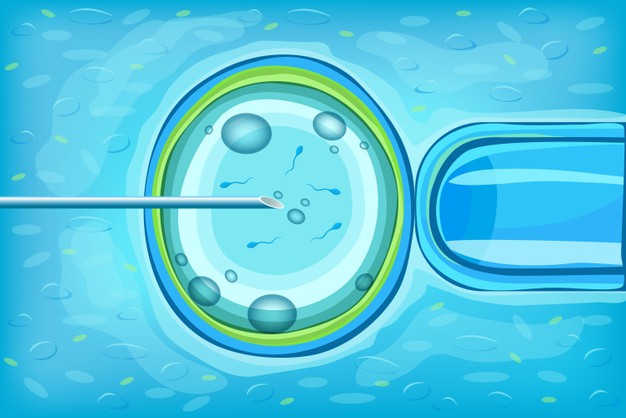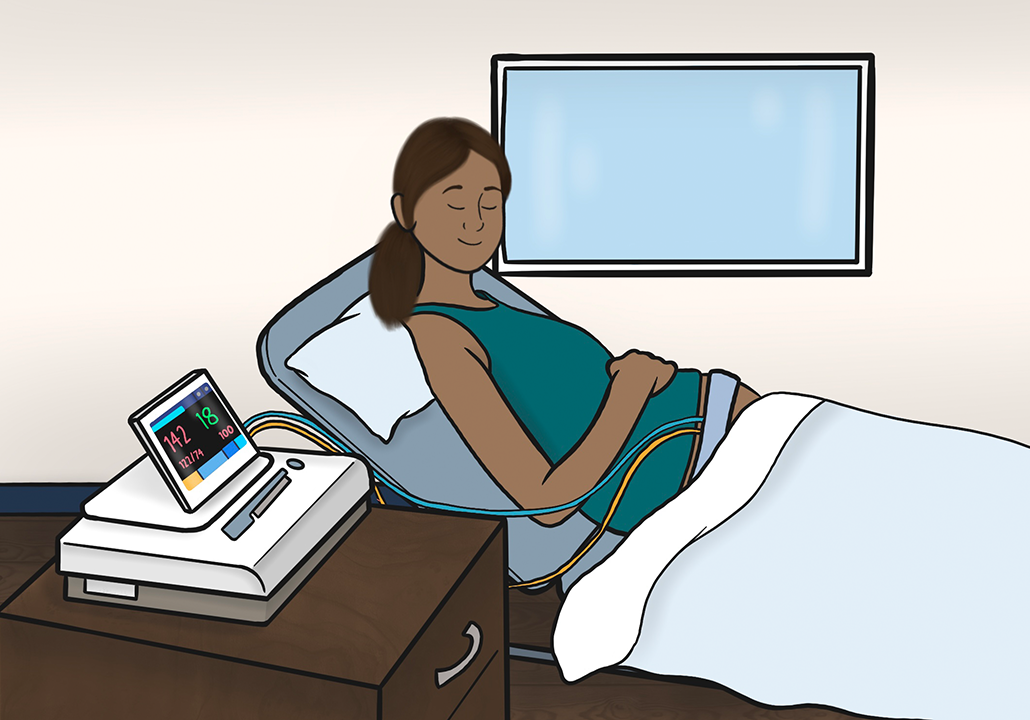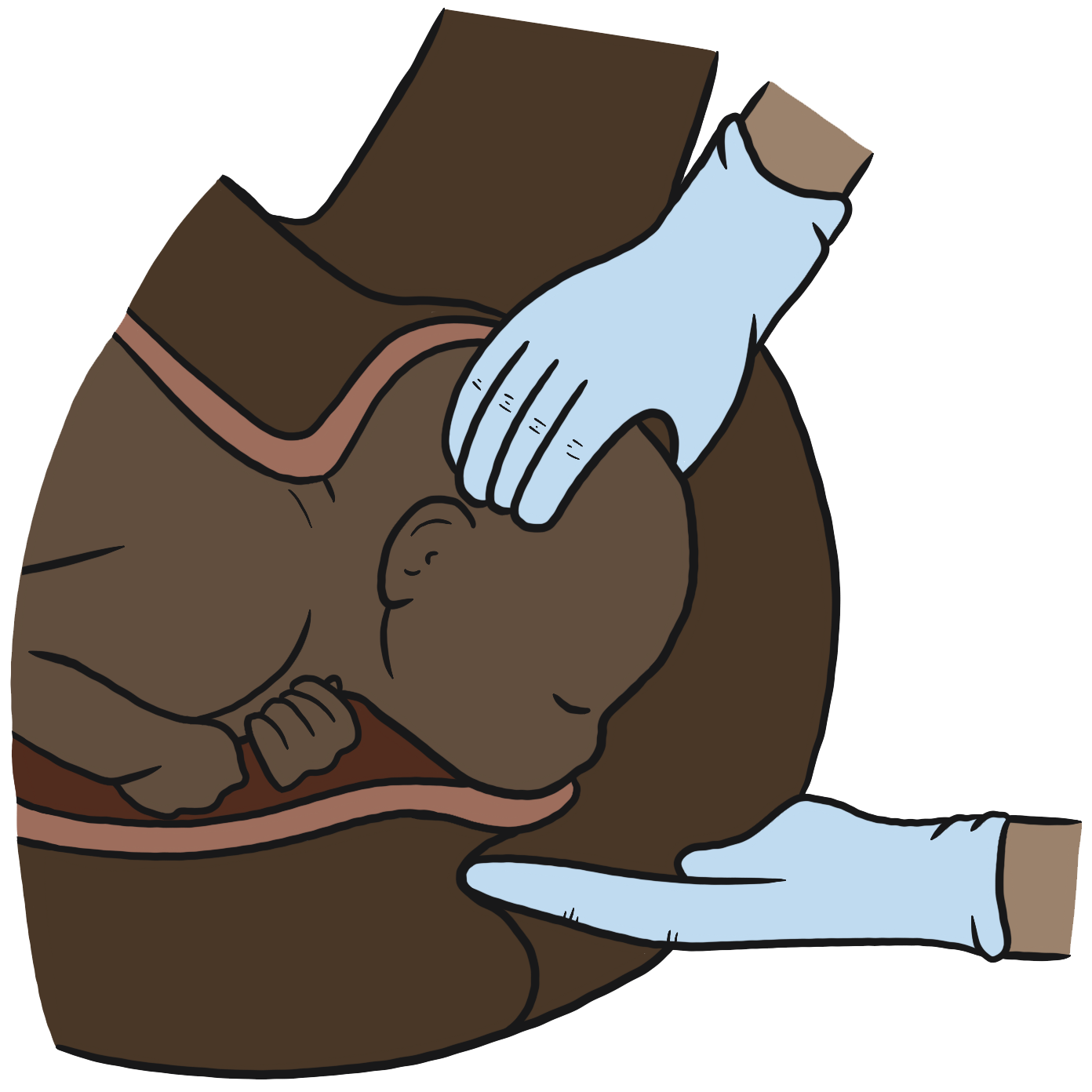I’m pregnant through IVF. Should I have an induction?
It is very common for women and people who became pregnant through IVF to be advised to have an induction of labour, usually around 38-40 weeks, if spontaneous labour hasn’t started already. Often, the reason given is that babies conceived by IVF are more likely to be stillborn – defined as the baby dying before or during birth from 24 weeks of pregnancy onwards. Let’s take a look at this claim and compare it with the evidence.
Does IVF increase the rate of stillbirth?
Much of the research out there does not show an increase in stillbirth rates for babies who are conceived through IVF. However, one large study in Denmark1 did show an increase in stillbirth for these babies, from 3.7 per 1000 babies to 16.2 per 1000 babies. This is sometimes described as four times the number of IVF babies dying in utero compared to non-IVF babies, but when we look at the numbers we can see that the actual numbers, while absolutely tragic, are still very low.
What the data in this study doesn’t tell us is why this study found this difference when others didn’t (including other similarly large studies). It also doesn’t tell us when in pregnancy these babies died – which is absolutely critical. If most of the stillbirths happened before term then induction at term will do virtually nothing to reduce this rate of stillbirth, but it will increase the risks of other problems caused by the induction itself. Without this information, we cannot know whether induction will be of any benefit at all, or whether it will solely cause harm. (We will come back to this vital point later.)
The Danish research did look at ‘confounding factors’, meaning that the increased stillbirth rate was not caused by, for instance, the age of the mother. This is helpful because there is a theory that some concerns around IVF are not due to the IVF itself, but the fact that more women and people have IVF to get pregnant when they are older because their fertility has lowered. Those who become pregnant in their 40s may also be more likely to have other health problems which in turn may affect their pregnancy and make IVF pregnancies look more problematic, even though it wasn’t the IVF treatment itself that caused these outcomes. The data from the Danish study showed that the increase in stillbirth rates that they observed was not due to the mother’s age, meaning that it may be the IVF itself that caused the increase – or it may be something to do with the reasons why the couple needed IVF in the first place.
However, other studies2 found that couples who took a year or more to get pregnant, but did so without fertility treatment, were around two to three times more likely to have a stillborn baby than couples who became pregnant more easily, meaning that the increased rate of stillbirth for those who did have IVF in the Danish research may be due to the fertility treatment, or their fertility problems, or a combination of both. Again, if this research is accurate, and there is an increase in stillbirth for these families, the only way that induction at term would reduce this risk is if these deaths were occurring at, or post term. Let’s take a look at that now.
Timing of stillbirth
So, the research into stillbirth and IVF is conflicting, with some studies showing that there is no increase in the stillbirth rate for babies conceived by IVF, and the Danish study showing an increase, but without any information on when in pregnancy these deaths happened. This is absolutely critical if we are to decide whether induction at term may be beneficial.

What do you need to know if you are pregnant through IVF and you’re being advised to have an induction because, you’re told there’s a higher chance of stillbirth?
The only study that we’ve found that gives us this information3 also noted a higher risk of stillbirth for IVF pregnancies BUT CRUCIALLY they saw no increase in the rate of stillbirth after 28 weeks of pregnancy. This research, therefore, tells us that induction at term would not reduce stillbirth rates for babies who are conceived by IVF.”
Does IVF mean the placenta stops working at the end of pregnancy?
There is no evidence that IVF treatment means that the placenta will not work so well at the end of pregnancy compared to babies conceived without assistance.
There is evidence that the placentas of babies conceived by IVF may be more likely to be affected by a number of conditions:
- Placenta Praevia, where the placenta is covering, or close to the cervix
- Placental abruption, where the placenta comes away completely, or partially, from the uterus, before the baby is born
- Placenta accreta, where the placenta is embedded further into the uterus wall than it should be, which makes it harder to come away after the baby is born
- Cord insertion problems, where the cord is connected to the placenta in a way which isn’t as strong as it should be, and it may be more likely to come away, or cause bleeding, if controlled cord traction is used at birth
All of these outcomes are rare, and the increased chance of them happening is small, so they are still rare in IVF pregnancies. None of these outcomes would be made better by induction of labour, and induction can cause some of them to be more problematic. For instance, it is common practice to have a managed placenta birth after an induction, and this normally includes controlled cord traction. Where the cord is not firmly embedded in the placenta this traction could snap the cord at the placenta.
IVF, gestational diabetes and preeclampsia
It does appear that those who become pregnant through IVF have an increased the chance of contracting gestational diabetes4. This does not appear to be related to the age of the pregnant woman or person. It also appears that IVF may increase the number of pregnant women and people who have preeclampsia in pregnancy, from around 1/100 to 6/1005. It might be that one or more of these conditions mean that an early birth is recommended, but this should only happen if it appears that the pregnancy ending earlier is less risky than it continuing.
Sometimes, doctors may advise induction simply because there is an increased chance of these conditions, whether or not the woman or person actually has them! Of course, personalised care – and logic – means that this should not happen! Only if the woman or person has one of these conditions and only if the severity of the condition means that, on balance, the risk to continuing the pregnancy is higher than the risk of induction would there be any reason to consider it. Even then, the decision is the pregnant woman or person’s, and theirs alone.
Small for gestational dates, fetal growth restriction and IVF
You may hear that babies who are conceived through IVF are more likely to be born with a low birth weight. There are three main reasons for this:
- Babies born following IVF are more likely to be born prematurely (either after spontaneous labour or early induction just because they’re IVF babies!)
- They are more likely to be pregnancies of twins or more compared to unassisted conception, and twins or multiples are often smaller than singletons
- A very small number of babies conceived by IVF may be more likely to be growth restricted in utero compared to babies conceived without assistance
It’s important to separate out a baby who is born with a low birth weight for the first two reasons listed above from babies who have actual growth restriction. It’s already very difficult to work out which babies are struggling with their growth, rather than just being babies who are small but healthy. Babies who are estimated to be below the 10th percentile for their gestational date may be considered to be growth restricted, even though most of these will be healthy. This equates to around 3-7% of all babies being classed as growth restricted in unassisted pregnancies, even though almost all will be fine6. IVF appears to increase the number of babies who are estimated to be below the 10th percentile by around 1 to 3 more babies per 100 pregnancies7.
Although most babies who are estimated to be under the 10th percentile will be perfectly healthy, a few will be genuinely affected by a problem such as reduced blood flow from the placenta. It is estimated that, of the babies who are estimated to be below the 10th percentile, 0.97%, or just under 1 in 100 of these babies, are at risk of stillbirth8.
The question we then need to know is whether induction at term would reduce the numbers of these babies who died before birth, and so far that doesn’t seem to be the case. One randomised control trial9 comparing induction at term with expectant management for women whose babies were considered to be small for gestational dates showed no decrease in the numbers of stillbirths, although this may have been because there weren’t enough people involved in the trial to show a difference. The UK’s Saving Babies’ Lives care bundle included an element where additional monitoring of small babies was a key factor, including recommendations for early birth if considered necessary. The bundle itself is thought to have reduced the stillbirth rate by a fifth – from 10 in 1000 to 8 in 100010. However, it significantly increased the interventions at term including induction and caesarean, with all the harm that they can cause, including to subsequent pregnancies where the risk of stillbirth and ectopic pregnancy increases by a small amount after a previous caesarean11. Furthermore, the Saving Babies’ Lives bundle had many separate elements including a focus on supporting women and people to stop smoking in pregnancy, and raised awareness of their baby’s movements, and we don’t know whether it was these elements, or the early births, which caused this reduction in stillbirths.
Is there a lower risk of stillbirth for twins conceived by IVF?
According to the Royal College of Obstetricians and Gynaecology (RCOG), twin babies who are conceived using IVF are less likely to be stillborn than twin babies who are conceived in an unassisted pregnancy!12

This is probably due to the fact that fewer twin pregnancies following IVF are identical twins compared to twins conceived without assistance, and identical twins who share a placenta have a slightly higher risk of stillbirth compared to non-identical twins. It is therefore important that parents of twins or multiples conceived through IVF are given personalised information about their risk factors, rather than all twin pregnancies being bundled together.
Summary
Most research does not show an increase in the rates of stillbirth for babies conceived to women and people who became pregnant through IVF, compared to babies conceived without assistance. However, one large study in Denmark did show an increase in the numbers of babies who died in pregnancy or during labour, from 3.7 to 16.2 in 1000. We don’t know why this increase was seen in the Danish study but not in most other research.
The only research that we have been able to find which did find that there was an increase in the rate of stillbirth when babies had been conceived by IVF AND which looked at when in pregnancy this happened showed that there was no increase in deaths after 28 weeks. This data means that there would be no value in trying to reduce the stillbirth rate by inducing labour at term.
We know that women and people who conceived through IVF may be more likely to experience gestational diabetes or pre-eclampsia during their pregnancy, but routine induction when these conditions are not there would not improve outcomes, and it is not always necessary even when women or people do have them. Sometimes, ending the pregnancy before spontaneous labour happens is extremely important, and pre-eclampsia can be a dangerous condition, but if you are advised to be induced just because you may be at an increased risk of having it you may wish to think very carefully about whether you feel that this is right for you. The choice is yours.
Babies conceived through IVF may be slightly more likely to be estimated to be below the 10th percentile, but almost all of these babies will be healthy, just small. We don’t currently have a good way to know whether babies who are estimated to be smaller than average are healthy, or whether they are one of the small numbers of babies who are struggling.
Most research into induction at term as an attempt to reduce stillbirth in small babies has not shown that this helps, however there is very little research which was done as randomised control trials. Where randomised control trials were done, there were usually not enough women in the trial to see whether the induction helped or not. The UK’s Care Bundle, ‘Saving Babies’ Lives’ did show a very small reduction of stillbirth of 2 in 1000 babies who were showing signs of being small, but we don’t know whether this reduction was due to induction of labour, or the other aspects of the bundle such as supporting women to stop smoking.
It is vital for each pregnant woman and person to consider their own personal situation when deciding whether or not to accept induction, rather than induction being the default option just because their baby or babies were conceived through IVF. As Jackson et al said in their paper, ‘Perinatal outcomes in singletons following in vitro fertilization: a meta-analysis’13, “Obstetricians should …. avoid iatrogenic harm caused by elective preterm labor induction or cesarean.”
References
- IVF and stillbirth: a prospective follow-up study, Wisborg et al: https://pubmed.ncbi.nlm.nih.gov/20179321/
- A: Adverse obstetric and perinatal outcomes in subfertile women conceiving without assisted reproductive technologies, Jaques et al: https://pubmed.ncbi.nlm.nih.gov/20381039/ and B: Draper et al, Assessment of separate contributions to perinatal mortality of infertility history and treatment: a case-control analysis: https://pubmed.ncbi.nlm.nih.gov/10347987/
3) Risk of stillbirth and infant deaths after assisted reproductive technology: a Nordic study from the CoNARTaS† group, Henningsen et al: https://academic.oup.com/humrep/article/29/5/1090/674618
4) Ηigher risk of gestational diabetes in singleton pregnancies, Anagnostis et al: https://cdn.ps.emap.com/wp-content/uploads/sites/3/2019/09/Abstract-%CE%97igher-risk-of-gestational-diabetes-in-singleton-pregnancies.pdf
5) In vitro fertilization is associated with the onset and progression of preeclampsia, Gui et al: https://www.sciencedirect.com/science/article/pii/S0143400419306691
6) Fetal Growt Restriction, Chew et all: https://www.ncbi.nlm.nih.gov/books/NBK562268/
7) Perinatal outcome of singletons and twins after assisted conception: a systematic review of controlled studies, Helmerhorst et al: https://pubmed.ncbi.nlm.nih.gov/14742347/
8) Fetal growth restriction and the risk of perinatal mortality–case studies from the multicentre PORTO study, Unterscheider et al: https://bmcpregnancychildbirth.biomedcentral.com/articles/10.1186/1471-2393-14-63
9) Induction versus expectant monitoring for intrauterine growth restriction at term: randomised equivalence trial (DIGITAT), Boers et al: https://www.bmj.com/content/341/bmj.c7087
10) Tommy’s information page on the Saving Babies’ Lives care bundle: https://www.tommys.org/research/research-topics/stillbirth-research/saving-babies-lives-care-bundle
11) Cesarean Section and Rate of Subsequent Stillbirth, Miscarriage, and Ectopic Pregnancy: A Danish Register-Based Cohort Study, O’Neill: https://journals.plos.org/plosmedicine/article?id=10.1371/journal.pmed.1001670
12) RCOG In Vitro Fertilisation: Perinatal Risks
and Early Childhood Outcomes https://www.rcog.org.uk/globalassets/documents/guidelines/scientific-impact-papers/sip_8.pdf (2.6)
13) Perinatal outcomes in singletons following in vitro fertilization: a meta-analysis, Jackson et al: https://pubmed.ncbi.nlm.nih.gov/14990421/





